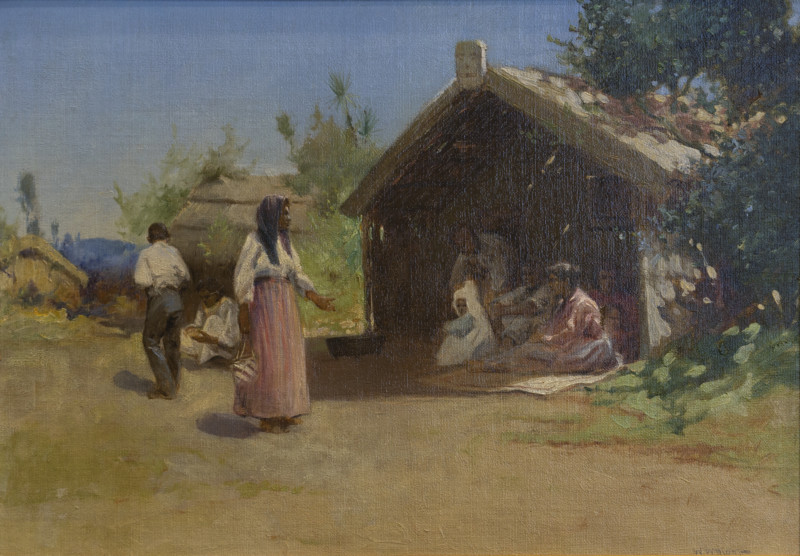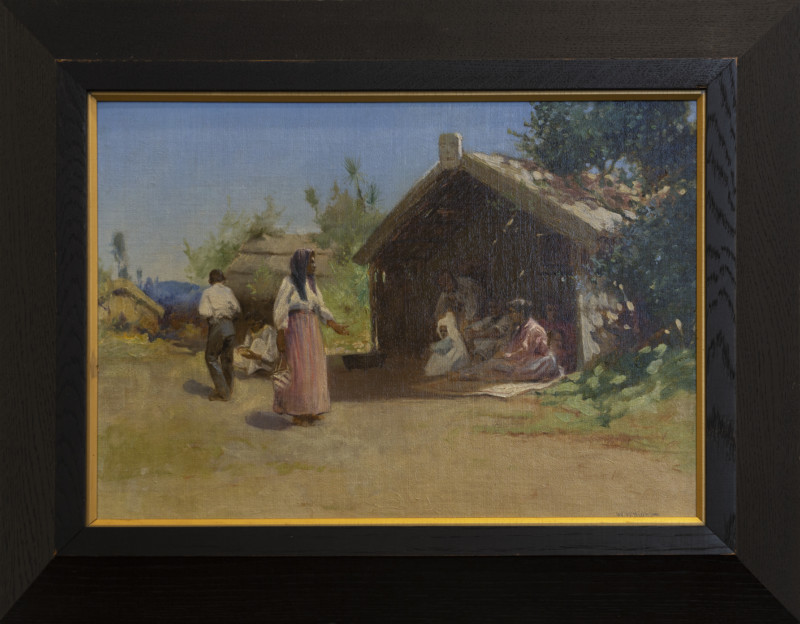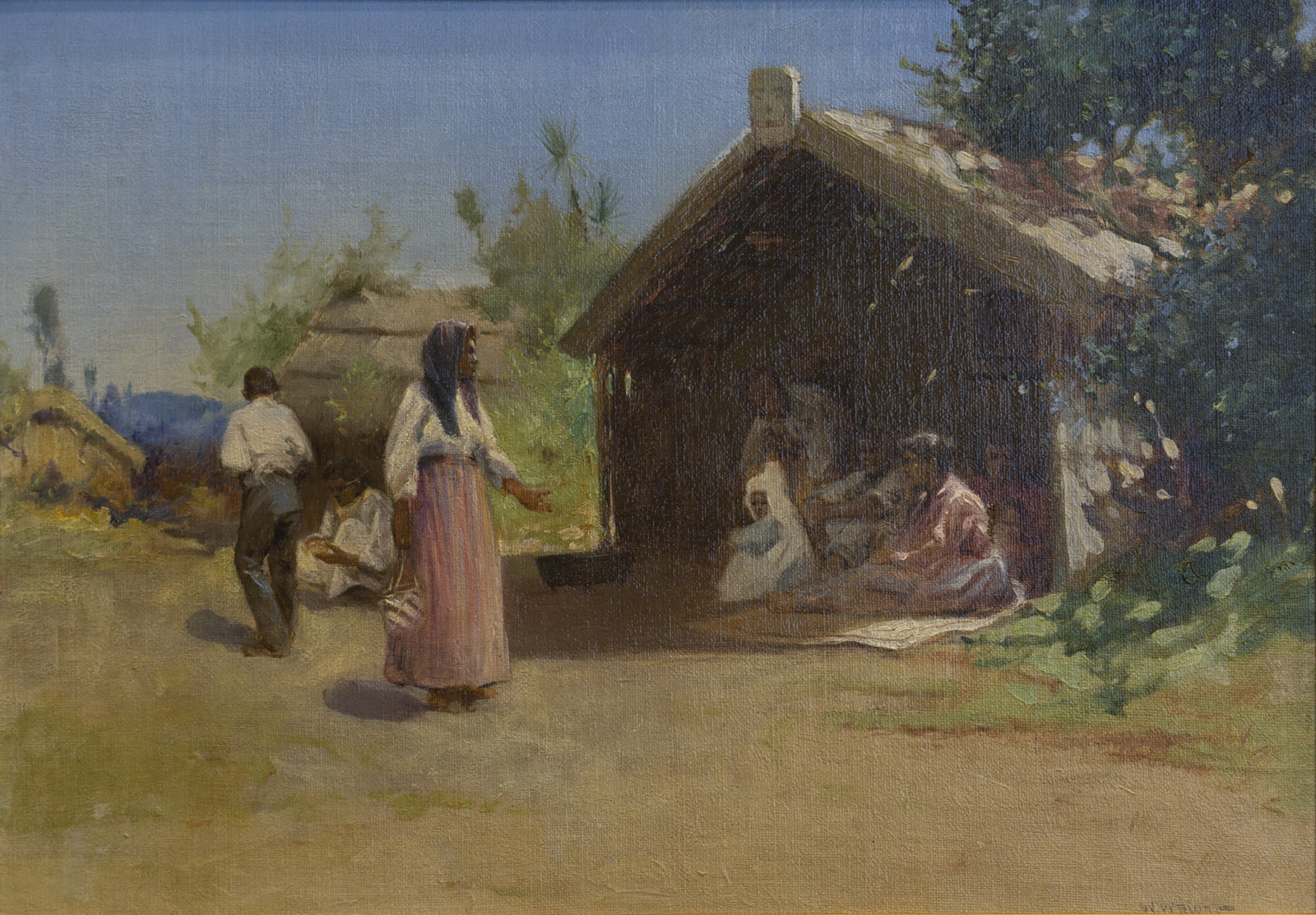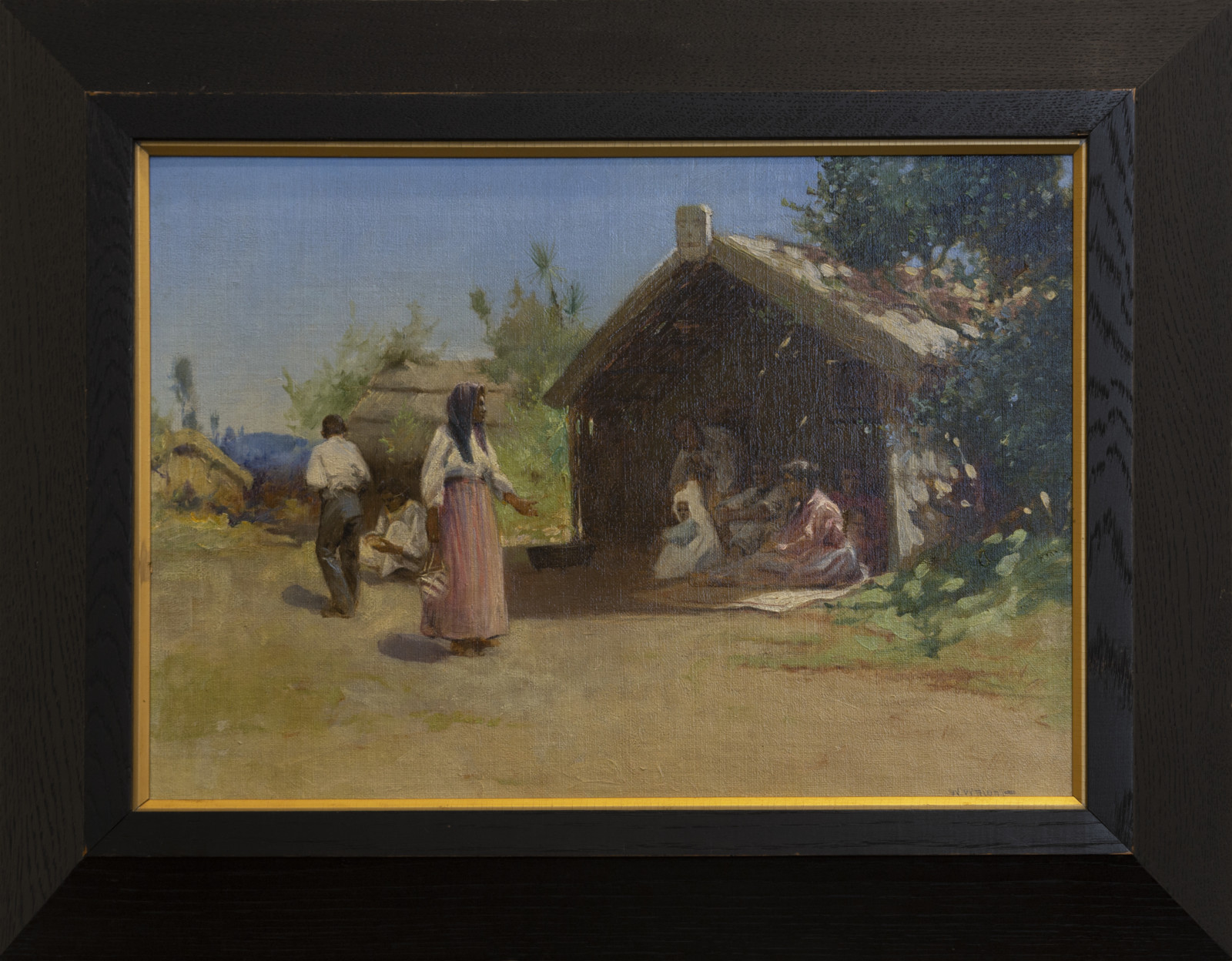WRIGHT, Walter;
The Family Gathering
c.1910
Oil on canvas
285 x 410mm (image); 435 x 565mm (frame)


The following two texts were written for Te Huringa/Turning Points and reflect the curatorial approach taken for that exhibition.
Peter Shaw
Born in Nottingham, England, Walter Wright and his brother, Frank Wright, emigrated to New Zealand in 1877, settling in Auckland. Like Robert Atkinson, they had a studio in Victoria Arcade, where they painted and took pupils. Walter Wright returned to England twice. In 1901 to 1902, he studied with the artist Stanhope Forbes, who, it is said, advised him to delete pink from his palette.
In 1908, the Wrights collaborated in a book about New Zealand, illustrated with 75 watercolour subjects and a text by William Pember Reeves. In it, there are a number of scenes of Māori pā life similar to this painting. In his chapter on ‘Country Life’, Reeves observes that, ‘In a word, the outlook for the Māori, though still doubtful, is by no means desperate. They will own land; they will collect substantial rents from white tenants; they will be educated; they will retain the franchise. At last they are beginning to learn the laws of sanitation and the use of ventilation and hospitals. The doctors of the Health Department have persuaded them to pull down hundreds of dirty, old huts, are caring for their infants, and are awakening a wholesome distrust of the trickeries of those mysterious conjuror-quacks, the tohungas.’
The title of this painting evokes happy domesticity in a pā that can never be identified since the tekoteko on the gable of the house is non-specific. The palette is cheerful (including a distinctly pink skirt), the sunlight and shadows expertly caught, the composition tidy.
Jo Diamond
If only our world consisted of the paradise that Wright conveys in this painting. We might all be far more naively content. Historical facts do not match this contrived ‘reality’ of a Māori village in the early years of the 20th century. Sadly, life was, and continues to be, much harder for Māori people than this sunny scene can tell us. The inclusion of symbolic vestiges of Māori culture, including whānau, does little to assuage a sad response to this picture.
A pale tekoteko on the top of an otherwise fairly generic gabled building, an obscured thatched roof in the background, and a coloured kete dangling from a dark-skinned hand may provide the viewer with the sense of a recognisably Māori social context. Yet, the people’s physical details ‘fade’ into the shades of grey, pink and occasional splashes of white. These colours are not so readily associated with Māori culture and therefore seem applied from foreign sources. Notice, too, how foreground and mid-ground colours resonate with the glare of full sunlight, relieved by some greenery, but never diminishing an overwhelming sense of social order and community ‘cleanliness’.
One way to approach this work is to ask questions: How has Māori culture and history been sanitised by European colonialism? Does this picture, rather than conveying an exact moment of New Zealand’s history, idealise the history of colonialist expansion in this country? With regard to artistic intention, does this idyllic ‘family gathering’ represent more of the artist’s colonialist idealism than any actual event in the lives of Māori people?
Sadness is therefore a powerful and understandable reaction to this seemingly ideal scene. Sadness comes with the realisation that the realities of history often paint a very different and much bleaker picture than the one shown here.
Inscriptions
W. WRIGHT [l.r.]Exhibition History
Te Huringa/Turning Points: Pākehā Colonisation and Māori Empowerment, Sarjeant Gallery Te Whare o Rehua, Whanganui, 8 April to 16 July 2006 (toured)
Provenance
?–
Fletcher Trust Collection, purchased via John Leech Gallery, Tāmaki Makaurau


